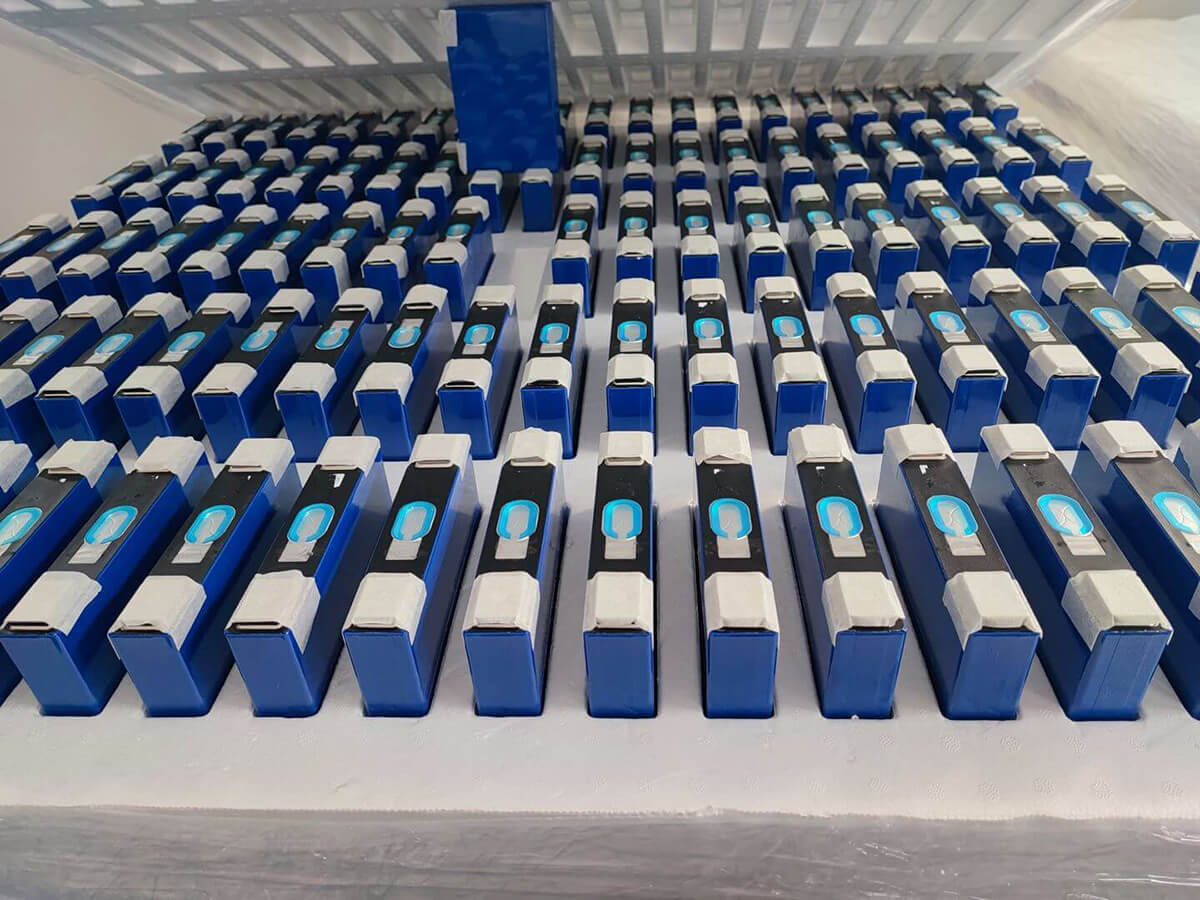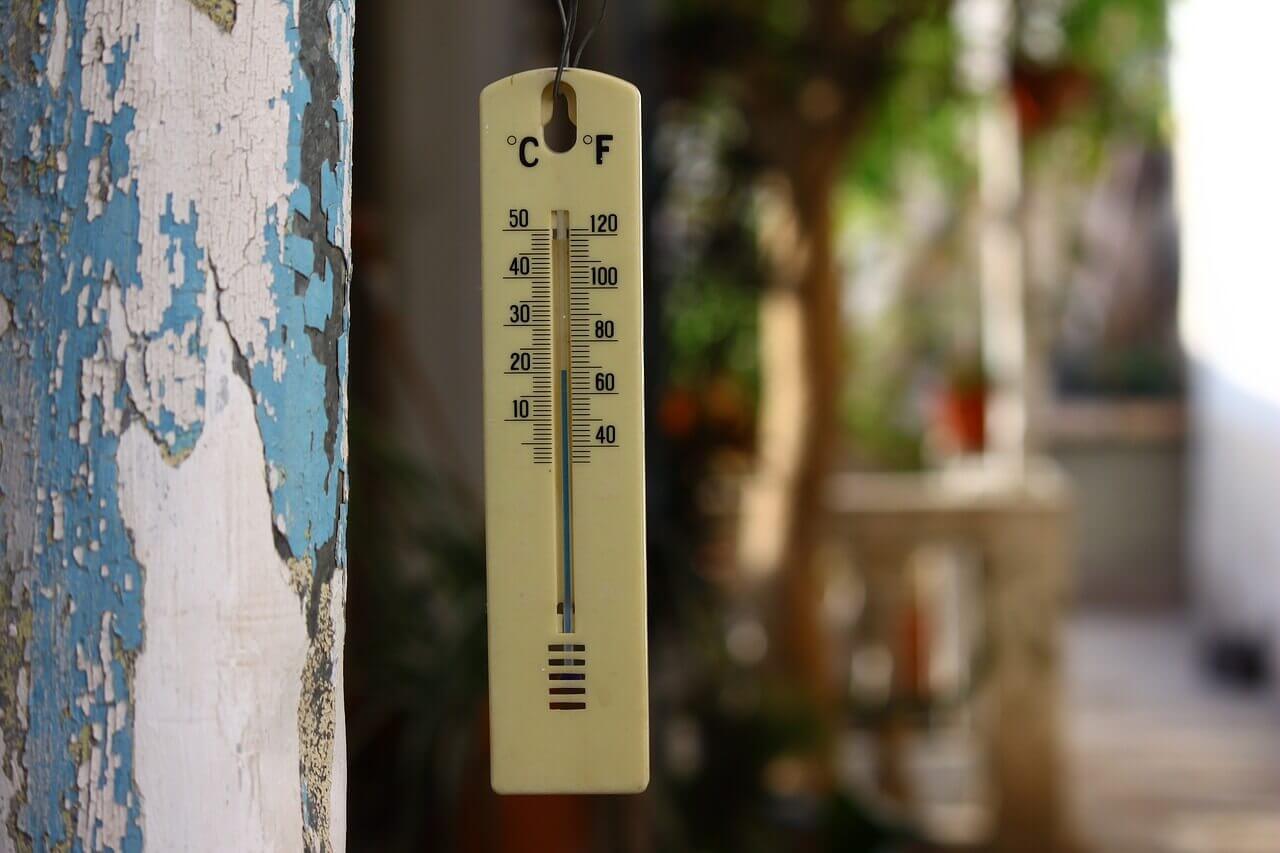Lifepo4 バッテリーの保管方法をマスターするための 4 つのポイント

With the improvement of living standards, people's demand for electricity is increasing, and lifepo4 batteries are deeply loved by everyone because of their super performance, 高い安全性, and long life. However, many people damage lifepo4 batteries in advance due to improper storage, which greatly increases the cost of use.
For those who are looking to store their Lifepo4 batteries safely and securely, this article has all you need to know. We’ll take you through the ins and outs of storing these powerful lithium-ion cells, so you can rest assured that your battery is in good hands. From temperature control to maintenance tips, we’ve got it all covered.
So if you want to get the most out of your Lifepo4 battery and keep it running optimally for years to come, then look no further - we’ve got the answers! Let’s dive in and explore what it takes to store lithium-ion batteries correctly and safely.
Lifepo4 バッテリーを正しく保管することが重要なのはなぜですか?
LFP バッテリーは多くの人にとって依然として高価な投資であり、ほとんどの人は現在、特定の季節や特別な状況 (停電、旅行) のニーズに合わせて使用しています。
ただし、lifepo4 バッテリーがアイドル状態の場合、時間や環境の変化によって内部バランスが変化し、バッテリーの性能が制限され、バッテリーの寿命が短くなり、投資の無駄になります。
したがって、Lifepo4 バッテリーを適切に保管することは、不可欠かつ重要な対策です。
Lifepo4バッテリーストレージに関する4つの重要なポイント
ポイント1:Lifepo4の保存時間の長さ
長期保管はバッテリー活動の不活性化につながり、自己放電率を加速するため、保管期間の長さに応じて、さまざまな寿命のバッテリー保管温度と環境を採用する必要があります。
- 推奨保管温度: -5 ~ +35°C (23 ~ 95°F)
- 最長 1 か月の保管: -20 ~ +60°C (4 ~ 140°F)
- 最長 3 か月の保管: -10 ~ +35°C (14 ~ 95°F)
- 拡張保管: +15 ~ +35°C (59 ~ 95°F)
追加のヒント: First, you'll want to maintain a storage level of no less than 25% and no more than 85%. This will help ensure that the battery maintains its capacity. Second, be sure to keep the storage voltage at or below 3.65V/cell for long-term storage and below 3.90V/cell for short-term storage. This ensures that the battery does not 過充電 and damage itself. Finally, if you have long-term lifepo4 storage needs, please cycle the battery at least once every 3-6 months, perform deep charge and discharge, and do not store a dead battery.

ポイント2:Lifepo4の保管シーズン
夏はキャンプ用、冬は暖房用などの用途で使う人もいるので、残りの季節は長期保管が必要になることは避けられません。
- 夏の保管:
Due to the high temperature in summer, the 自己放電率 of lithium iron phosphate batteries will be relatively high, about 3-4% per month. Although the lfp battery is a high-temperature resistant battery, it is best not to place it in a place that is too hot. An indoor room that is about the same temperature as a room temperature is the best choice.
- 冬の保管:
冬の気温は低く、地域によっては-20℃に達することもあります。バッテリーは実際には化学反応であるため、冬のバッテリーの自己放電率は比較的低く、月あたり約 2-3% です。ただし、lifepo4 のバッテリーを冬に保管する場合は、lifepo4 の保管温度が室温よりも高いことを確認してください。
地域が冬に-20°Cの環境にある場合は、バッテリーへの低温の影響に効果的に耐えることができる特定の低温LFPバッテリーを選択することをお勧めします。 .


ポイント3:Lifepo4ストレージの外部環境
With careful consideration and proper planning, the storage environment of a LiFePO4 battery can be optimized for peak performance and longevity.
Firstly, the temperature should remain constant and moderate. Hot or cold temperatures can cause permanent damage to the cells and reduce their life cycle. A storage environment between 10°C and 25°C is ideal for LiFePO4 batteries, with a maximum spike of 40°C. On the other hand, a temperature lower than 0°C may cause irreversible damage.
Secondly, make sure your LiFePO4 battery is stored in a dry environment. Moisture can degrade cell performance and lead to corrosion on metal terminals. It is also important to ensure that no dust or debris enters the battery compartment as this can cause short circuits which damage cells over time. For best results, store your LiFePO4 battery in its original packaging with the lid firmly secured shut.
Finally, it's wise to keep your LiFePO4 battery away from electronic devices such as laptops or phones as these may produce interference that can decrease cell performance. Furthermore, if storing multiple batteries together, keep them at least 5 cm apart to prevent any potential contact between cells that could lead to short circuits or dangerous overheating situations.
追加のヒント: The battery with a BMSシステム can monitor and protect the battery when the lifepo4 battery storage or use.
ポイント4:Lifepo4のバッテリー収納前に外す
Harveypower lifepo4 バッテリーパック have a master switch so that the user can easily turn off the battery. But just turning off the main switch is not enough, please disconnect the battery terminal cable before storing the lifepo4 battery to ensure that the battery is completely turned off and disconnected from the power source.
これは、センサーなどの特定のコンポーネントがメインの切断スイッチをバイパスするように設計されていることが多いためです。そのため、バッテリーを保管するときは、必ずバッテリーのプラスとマイナスのワイヤーを外してください。
By doing this, you can ensure it will not run low during lifepo4 storage and will always be ready for use. Last but not least, you should always make sure to only use the right lifepo4 chargers.

How To Store Lifepo4 With The System
To store a lifepo4 battery in a system, you should always ensure that the battery is charged to at least 30% when stored. This allows fast charging when needed and supports the operation of the BMS to prevent any damage due to low voltage conditions, allowing the system to be regularly monitored to ensure battery health.
Beyond that, you should also avoid leaving the battery plugged in for extended periods of time, as this can significantly shorten its lifespan.
もし lifepo4 without bms, the battery status change during storage cannot be monitored in time, please be sure to check it yourself regularly.
How Lifepo4 Stores In Cold Weather
When it comes to the safe storage and maintenance of lifepo4 batteries, cold weather can pose a unique challenge. LIFEPO4 battery cells are particularly sensitive to extreme temperatures, so proper storage is essential for maintaining their safety and performance. With the right steps taken, you can ensure that your LIFEPO4 batteries stay in top condition even when temperatures drop.
Here are some tips for storing LIFEPO4 batteries in cold weather:
Prepare the Battery
Before placing your LIFEPO4 battery in cold storage, make sure that it is fully charged or at least has enough charge to withstand the low temperature. This will help prevent any damage caused by deep discharging due to the cold temperatures. Also, if possible, store your battery in an insulated box or container as this will help maintain a more stable temperature and environment.
Monitor Temperature
Storing LIFEPO4 batteries in an area with temperatures below 0 degrees Celsius can cause permanent damage. To avoid this, monitor the temperature of the area where you’re storing your battery and make sure it does not drop too low. Keeping a thermometer nearby is also helpful for checking conditions at any given time.
Keep It Charged
Even when stored in cold temperatures, it’s important to keep your LIFEPO4 batteries charged on a regular basis to offset any power loss due to self-discharge. Make sure you charge your battery regularly according to its manufacturer’s instructions and check its voltage level before use after periods of storage.
To sum up, taking precautions such as preparing and charging the battery before storing it, monitoring temperature levels during storage, and keeping it charged regularly will ensure that your LIFEPO4 batteries remain safe and perform optimally even in cold weather conditions.

Lifepo4保管前に充電しないことのリスク
If you don't charge the battery before storing it, there are several risks associated with Lifepo4 batteries. Firstly, if a battery is stored without being fully charged, it will discharge and may end up entirely drained. This can cause permanent damage to the cell and render it unusable. Secondly, when a Lifepo4 battery is not charged before storage, sulfation can occur. Sulfation is a process by which lead sulfate crystals form on the anode of the cell and reduce its capacity for storing energy. This reduces the lifespan of the battery significantly.
For these reasons, it is important to always charge your Lifepo4 battery before storing it. Charging your LiFePO4 batteries regularly will ensure that they stay in good condition and perform optimally for years to come. Properly charging your LiFePo4 batteries also helps to reduce safety risks associated with improper storage or usage of the battery. Taking these preventative measures will ultimately give you more control over how long your LiFePo4 can last and help maximize its lifespan.
以上がlifepo4のバッテリーを個人で使用する際の注意点です。にとって lifepo4 バッテリー工場/サプライヤー/保険業者の皆様、lifepo4 バッテリーを大量に保管する場合、性能の完全性と保管の安全性の問題にもっと注意を払う必要があります。
以下に、lifepo4 バッテリーを工場倉庫で保管する際に注意する必要がある 15 のポイントをリストします。
工場Lifepo4保管のための15の対策
- シングルバッテリーバンクは個別に設定する必要があります。保管場所には「花火厳禁」の目立つ看板を立て、周囲に可燃物、爆発物を積み上げることは厳禁です。
- セルまたは蓄電池の倉庫の温度は 20±5°C、最高でも 30°C を超えず、相対湿度は 75% を超えないように管理されています。倉庫を清潔で乾燥した換気に保ち、他のアイテムを保管しないでください。
- セルまたは蓄電池の倉庫に煙と温度の警報装置を設置し、警報信号を 24 時間有人の場所に送信する必要があります。
- セルまたはバッテリーバンクには、独立した外部緊急排気装置を装備する必要があります。事故排気装置は、煙および温度警報装置と連動していなければならない。
- サーバーラックのバッテリーと 積み重ね可能なバッテリー きれいに配置し、高すぎないようにする必要があります。保管施設は不燃材料を使用し、静電気防止対策を講じる必要があります。
- 各バッテリー (セル) の正極と負極は、短絡保護を防ぐために絶縁する必要があります。
- バッテリー倉庫には、自動スプリンクラー設備を装備する必要があります。
- バッテリーはフルパワーで保管することはできません。40%-70% パワーで保管することをお勧めします。
- 半製品のバッテリーには保護プレートを装備する必要があります。
- 使用済み電池は、放電後、別々に保管してください。
- バッテリーおよびセル倉庫の各防火区画は、250 平方メートルを超えてはなりません。
- バッテリーとセルの倉庫には、十分な数の球状の乾燥粉末自動消火器またはスプリンクラーを吊るす必要があります。
- 蓄電池とセルストレージには、それぞれ防火毛布2枚と、事故用バッテリーを取り扱うための専用バレル1つが装備されています。
- バッテリーバンクと老化室は、防爆電気機器を使用する必要があります。
- 故障したバッテリーと廃バッテリーは、隔離して廃棄するために特別な廃棄キャビネットに入れる必要があります。偶発的なバッテリーの廃棄には、防爆型の砂バケツを使用することをお勧めします。
lifepo4 バッテリーを適切に保管することに加えて、バッテリーの寿命を効果的に延ばすのに役立つ、日常の使用における多くのメンテナンス対策もあります。これは、生産技術によって決まるバッテリー性能以外に、lifepo4 バッテリーを最大限に活用するための唯一の方法です。
Lifepo4 バッテリーのその他のメンテナンス方法
バッテリーを正しく充放電する
- 深い放電を避ける
- 過充電を避ける
- 長期的な停電を避ける
- 長期の不適用を避ける
適切な端子の取り付け
適切な端子マウントを選択することは、リン酸鉄リチウム電池にとって非常に重要です。ただし、セルに最適な端子マウントがわからない場合は、製造元に詳細を確認してください。
インストール前に端末を清掃してください
バッテリー上部の端子はアルミニウムと銅でできており、空気に触れると時間の経過とともに酸化物層が形成されます。セル インターコネクタと BMS モジュールを取り付ける前に、バッテリー端子をワイヤ ブラシで完全にクリーニングして、酸化を除去します。
バッテリーの寿命に影響を与える要因とバッテリーのメンテナンス方法について詳しく知りたい場合は、記事「」を確認してください。lifepo4 バッテリーの寿命は?"

結論
Proper storage of Lifepo4 batteries is critical. Otherwise, it will not only reduce its performance and life, but also cause danger. There are four key points to follow for Lifepo4 battery storage: storage time, storage temperature, storage environment, and how to store it with the system. To ensure optimum performance and safety, it is important to charge the battery before storing it. Additionally, regular maintenance is essential to prolong the life of Li-ion batteries.
Unfortunately, many people do not understand the importance of storing Lifepo4 batteries properly. Ironically, they often don't realize the risks associated with improper storage until it's too late. My advice? Don't take shortcuts when it comes to properly storing your Lifepo4 batteries! Taking the time to get things right will save you a lot of time and money in the long run.
All in all, proper storage of Lifepo4 batteries should be taken seriously - not only for optimum performance and longevity, but also for safety reasons. Follow these guidelines and your battery should last a long time!
その他のよくある質問
1. Should solar lifepo4 batteries be placed outdoors or indoors?
It depends on the type of battery and the conditions of the installation site. However, an outdoor installation is preferred as it allows for better ventilation, reduces the risk of fire and extends battery life.
Indoor installation is recommended if the location is in direct sunlight, hot weather, or severe rainy weather. It is worth mentioning that it is important to ensure proper ventilation and follow the manufacturer's guidelines to avoid any potential safety issues.
2. Should you fully charge your LiFePO4 battery before storing it?
It is recommended to fully charge the LiFePO4 battery before long-term storage. This helps prevent the battery from self-discharging and entering a deep discharge state, which can damage the battery and shorten its lifespan.
However, it should be noted that overcharging should be avoided, and storing a fully charged battery for a long time will also cause performance degradation, so it is best to check and maintain the battery charge status regularly during storage.
3.How do you store lithium batteries when not in use?
When lithium batteries are not in use, they should be stored in a cool, dry place with a stable temperature between 20°C and 25°C. It is recommended to store them at a partial state of charge, around 40% to 60% of their full capacity, as storing them at a full or empty state of charge can damage the battery and reduce its lifespan.
Additionally, it is important to keep the batteries away from direct sunlight, moisture, and heat sources, and to avoid storing them in a way that they may become damaged or short-circuited.
4. Can LiFePO4 batteries be stored on their side?
LiFePO4 batteries can be stored on their side, but it is generally recommended to store them in an upright position to prevent any potential leakage or damage to the battery. Storing them on their side may increase the risk of the electrolyte leaking out of the battery and causing damage to surrounding objects or equipment.
However, if storing them on their side is necessary, it is important to ensure that the battery is securely positioned and protected from any potential damage.
5. How long do LiFePO4 batteries last in storage?
The lifespan of LiFePO4 batteries in storage depends on various factors, such as the battery's condition, temperature, and charge level. When stored under optimal conditions, LiFePO4 batteries can retain their charge for several months without significant capacity loss.
However, it is generally recommended to recharge the batteries every 3 to 6 months to prevent over-discharge and to maintain their optimal performance. It is also important to regularly check the batteries for any signs of damage or corrosion and to store them in a safe and appropriate environment to ensure their longevity.
6. What is the best voltage to store LiFePO4 batteries?
The best voltage to store LiFePO4 batteries is between 3.2V and 3.3V per cell, which is approximately 50% to 70% of the battery's maximum charge capacity. Storing the batteries at this voltage range helps to minimize the risk of over-discharge or overcharging, which can damage the battery and reduce its lifespan.
7. Should lithium batteries be stored full or empty?
Lithium batteries should be stored at a partial state of charge, typically between 40% to 60% of their maximum capacity. Storing the batteries at this level helps to minimize the risk of over-discharge or overcharging, which can damage the battery and reduce its lifespan.
8. Do LiFePO4 batteries need ventilation?
LiFePO4 batteries do not require ventilation like some other types of batteries, such as lead-acid batteries. They are considered to be relatively safe and stable, and do not produce harmful gases during normal operation or charging. But in some cases, ventilation may be recommended in certain applications to help dissipate heat and prevent overheating.
